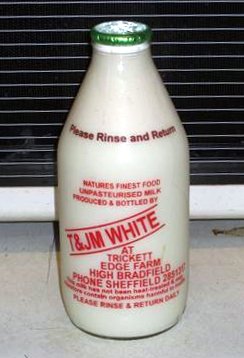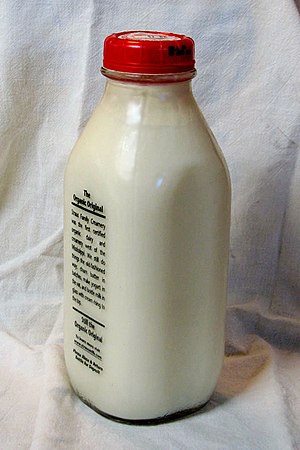
We know genetically modified food is bad for us. How do we avoid being poisoned?
This is the 4th of a series of 4 articles on Genetically Modified Foods.
In the past three articles of this series, I have spent time explaining what GMOs are and why we need to care, identifying both the health risks of GMOs and the underlying connections between the GM companies (Monsanto) and the Federal Government.
The question is no longer why we shouldn’t eat genetically modified foods instead the question becomes, “how do we avoid genetically modified foods.” And that question is harder to answer then I would like.
Because the FDA doesn’t require GM foods to be labeled as such (mostly because they know we won’t buy them if we knew), it’s hard to gauge what foods are actually free from GM contamination. We do know this though.
Over 80% of all processed foods in the United States likely contain GM ingredients. The reason we can confidently state that is because we know that over 90% of the corn and soy, cotton and canola grown in the United States is genetically modified. If a processed food contains corn, soy or “vegetable oil” chances are its origins are GM.
While you’ve probably heard of corn, soy or canola, you might be under the impression that cotton is used for clothes. Unfortunately, most of the cotton grown with genetically modified seeds is used for food oil extraction and used in your salad dressings, mayonnaise, potato chips and crackers. The use of cottonseed oil for food consumption is a problem in its own right as well as just being a beacon for GM foods.
Some companies will voluntarily label their processed foods as non-GMO, but since there are no standards on that, a careful shopper still needs to read the ingredients. While a package might say “No GMO”, other GM ingredients may be hidden in the label.
There is a story going around on the Internet regarding produce and Price Look Up (PLU) codes that label which foods are conventionally grown, are genetically modified or are organic. According to this story, any produce in your supermarket which has a 5 numeral PLU starting with the number 8 is genetically modified. Unfortunately, while this would be handy to have, the simple truth is that while the numbers were assigned, they were never used. The reason of course is that producers know that most informed buyers wouldn’t buy products they know were genetically modified. So instead, they hide that information from us. In reality, many seed companies will also hide the seed origins from the farmers so they might not know.
There are many campaigns requesting that our food be labeled so that we know what we are buying. There are drives in California, Vermont and other states to do just that. But the food processors are fighting that tooth and nail. They don’t want us to know what is in our food. They want us to be ignorant.
There is also a national effort to pressure the FDA to require labeling of genetically modified foods in stores. If you are interested, go to justlabelit to sign the petition.
Think that if you simply avoid processed foods that you are safe? I wish. Unfortunately, Monsanto got USDA approval (over the Christmas break) to sell a new genetically modified sweet corn. This means that the corn on the cob you buy in the summer, or the canned or frozen corn you buy, could also be genetically modified. To date, Whole Foods, Trade Joe’s and General Mills has promised not to use this corn in their products. Unfortunately, Wal-Mart, the largest grocery retailer in the United States, which is trying to promote itself as a healthy alternative and has been a big promoter of First Lady, Michelle Obama’s Healthy Eating campaign, has not yet signed on.
The best way to avoid genetically modified foods at the supermarket at this time is to buy organic foods. Organic has a specific legal meaning in the United States and one of the meanings on foods that are labeled organic (processed or produce) is that no GM ingredients were used. But you still need to be vigilant.
When buying produce at a grocery store, make sure that it is labeled organic. Produce that isn’t labeled organic may have been contaminated with GM foods (even if they haven’t, conventionally raised produce are routinely sprayed with pesticides). If you are buying from a farmer or farmer’s market, talk with the producer and make sure that there are no commercial genetically modified farms near them which can cross contaminate. (Trust me, they will know)
- Recall that even though specific foods are not genetically modified, they can still be contaminated by nearby fields that contain GM plants. Foods that are specifically suspected are:
- Chard and Beets
- Rutabaga and Kale
- Bok Choy, Turnips, Chinese Cabbage
- Flax
- Rice
- Look for grass-fed beef. Beef that is derived from corn-fed cows will be contaminated from the GM corn they were fed.
- Avoid farm raised salmon, only buy wild caught.
- Only buy eggs that are labeled 100% organic or better yet, buy from a local farm which raises chickens on pasture.
- Only buy milk from grass-fed cows. Find a raw milk producer in your area if you can. Go to their farm and check their hygiene, don’t buy pasteurized milk there is a good chance it has rBGH.
- Shop at Farmer’s Markets or join a local CSA.
Just because a product says “Natural” on it, don’t be fooled. Natural doesn’t have any specific meaning within the U.S. food regulations. It’s a marketing gimmick, just as the word “healthy” is. These words do not mean what we think they do.
When it comes to processed foods, only buy the foods that are labeled “100% organic”. Even if a product says “organic”, be sure to read the label carefully. A label that says “Made from Organic Ingredients”, may still contain non-organic (i.e. genetically modified) ingredients. In order for a processed food to be labeled 100% ORGANIC, all the ingredients must be organic.
Given that current U.S. law doesn’t regulate labeling of genetically modified foods, it definitely puts the burden on us. Careful shopping will help you avoid GM foods for home. If you are eating at a restaurant, unless it is a restaurant that specializes in farm to table, the chances are that you will be ingesting genetically modified food products.
Series
This is the last in a series of articles that I am releasing over the few months on the subject of Genetically Modified Foods. As I started the research, the subject became too large to be written in one post. The series consists of:
- Whats’s all the Fuss about GMOs
- GMO Health Risks
- GMOs and Monsanto
- Identifying Sources of GMOs in your Food.
Links
Related articles
Tags: avoid GM Foods, FDA, Genetically modified food, gmo, Labels




